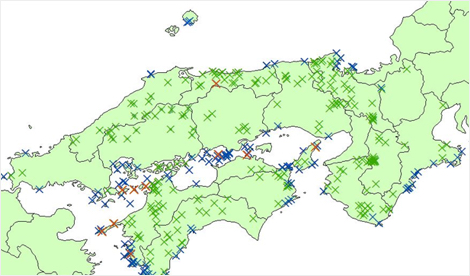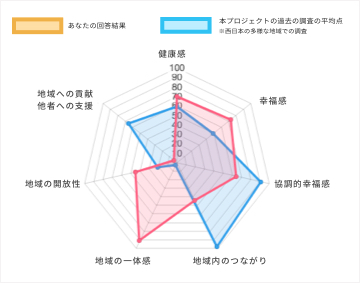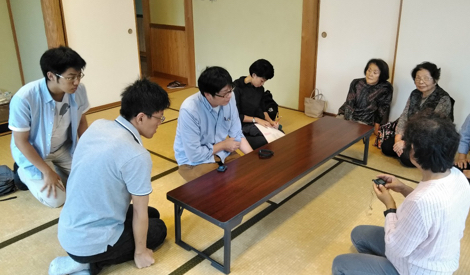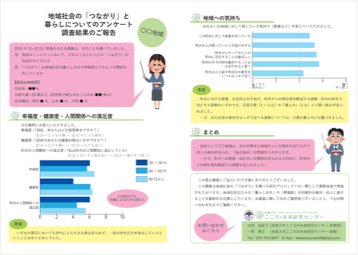- TOP
- Surveys and Analysis
The goal of this project is to develop multiple indicators that can measure regional subjective happiness and relational ties from various angles (using items on questionnaire surveys).
Three types of research are being conducted to develop these measures.


Questionnaire surveys
In the questionnaire surveys, we investigated things such as residents \' happiness, social connections and set of values.
The questionnaire items covered a wide range of topics, which allowed us to select items that were important for understanding the regional conditions and judging the validity of the items in our analysis.
The questionnaires were conducted across many regional communities (approximately 500 villages in Western Japan), i.e., the "Broad Regional Questionnaire" and also in more concentrated localities, i.e., the "Concentrated Regional Questionnaire". For the Concentrated Regional Questionnaire, the response rate was higher and we were able to conduct follow-up interviews on aspects that cannot be tapped with paper questionnaires.

Broad Regional Questionnaire
This survey was conducted four times between 2012 and 2018. To collect survey data, we randomly selected about 500 small regional communities (villages, towns and postcode districts) in western Japan and sent survey forms to every household in the selected areas via the national postal service's Town Plus service.
The questions on this survey asked about topics such as subjective evaluations of happiness, relationships with people inside and outside of the community, occupation and sense of value. From this wide range of questions, items that are determined to be good measures of various aspects of regional happiness will be selected.

△ Concept of Analysis

Concentrated Regional Questionnaire
Thanks to the cooperation of the Kyotango City Omiya Town Satojikara Revitalization Committee, the Joint Residents' Association of Minami Uzumasa School District in Ukyou Ward, Kyoto City and the City Hall of Takizawa City, Iwate Prefecture, we distributed and collected paper surveys from local residents to gain a deeper understanding of the local conditions and improve the accuracy of indicators. By providing the community with feedback from the survey, we can test the practical applications of these items, as well as their effects. Additionally, we conduct face-to-face interviews with residents, which can tap aspects of life that paper surveys cannot, such as everyday feelings and episodes.

△ Feedback to the community


Investigation of lifestyle environment
1. Some areas that participated in the Broad Regional Survey also underwent onsite evaluations of the physical environment by visiting researchers, and the results of the paper and physical surveys were analyzed in conjunction with each other.
Specific measurements of the physical environment included the layout of the town, the architectural construction of homes, and signs for social services (e.g., signs indicating participation in disaster prevention services and "Kodomo 110" stickers that display the emergency services number and with a reminder to use it if a child is in trouble).


Collecting data on activity levels and social networks
1. In the Okuono district of Omiya Town in Kyotango City and the Tsuniyoshi Hyakkaten - the focal points of the paper survey data collection - we are measuring residents' daily activity (e.g., sleeping habits, walking) and social network contacts (using a portable electronic device that participants attach to their bodies). In addition to objective data about social connections within the community, we are checking people's health via measurements of sleep and physical activity and conducting analyses that will improve the objectivity of the data from the paper survey.
By connecting the results of the paper surveys with the data from the environmental living surveys and activity monitors, we will be able to improve the objective accuracy of the subjective measures.
By using multidimensional measurements, it will be possible to analyze the strengths and weaknesses of local regions.





